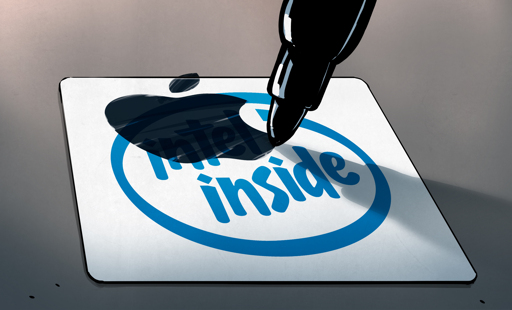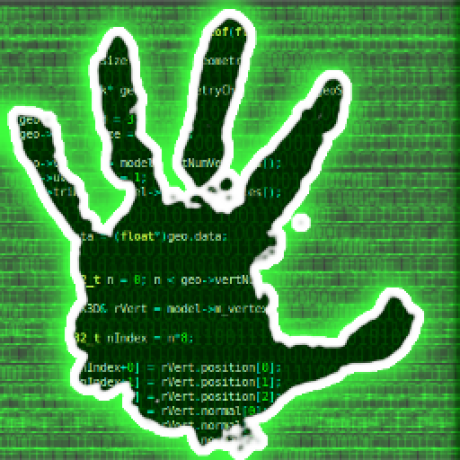Uh… didn’t this happen like 7 years ago when they stopped using intel chips? Also why not just buy a pc to do this diy-adjacent bullshit? Not like you can’t get Mac equivalent (or better) hardware for literally the same price these days. It’s not 2004.
Uh… didn’t this happen like 7 years ago when they stopped using intel chips?
I think they were still releasing updates for the non-Apple Silicon Macs, which meant Hackintosh was still possible.
Also why not just buy a pc to do this diy-adjacent bullshit? Not like you can’t get Mac equivalent (or better) hardware for literally the same price these days. It’s not 2004.
That’s what a Hackintosh is though. It’s running Mac on non-Apple hardware.
The nice thing about the Hackintosh was the upgradability/repairability. Wishing Apple would bring some of that back.
Abandoned mine several years ago. Kind of a shame, they were a good option for a while for people who weren’t windows fans but didn’t want to run linux full time. Apple just doesn’t really have any offerings for people who want a desktop that’s upgradeable, but don’t want to drop the money on a Mac Pro.
I had a harder time getting a Macintosh going then just running Linux full time
I did not find it that difficult, but there was a lot of up front homework to make sure you had a compatible hardware configuration due to needing hardware which was supported by the limited number of Mac configurations. I recall running into a problem where I wasn’t getting a picture on my monitor and I could not figure out why since my video card was supported and the drivers were ok. The problem as it turned out? I had my monitor connected via DVI and macs had never supported DVI so there were no drivers. Once the install was done, it pretty much Just Worked. Linux installs are pretty easy these days but debugging problems can be very difficult. The hard part of the hackintosh was keeping up with upgrades, since they needed to be done manually (due to potentially breaking things).
The SSD in the M4 mini is upgradable, for those who aren’t aware.
It’s replaceable, it’s not upgradable.
Apple doesn’t use standard NVMe M.2 drives. The controller is built into the SoC rather than being on the storage device itself.
it never ceases to amaze me the amount of time, energy and money apple spends engineering things to be worse for customers.
Why? Anti-features aren’t just Apple. All big tech do it to users.
Edit: And automotive, white goods companies, etc, etc
In this case Apple also prioritizes performance.
It’s more cost effective to integrate the controller.
Being worse for customers is just a happy accident.
You and I both know that Apple doesnt do this shit for cost efficiency.
They do it to make make shit worse for consumers and “unauthorized” repair services.
I’m aware, but I have upgraded my 256GB to 2TB so not sure what you’re on about. See: https://appleinsider.com/inside/mac-mini/tips/how-to-upgrade-the-ssd-in-your-m4-mac-mini
Saving this for later.
Is this a take in regards to soldering in new flash chips or replacing a board and then needing to wrestle Apple support during an RMA to replace a faulty component (because I quiet confidently believe, Apple will cross check your hardware with their records from the serial number).
And I don’t believe regular PC manufacturers/OEMs are that hard to argue with if I insert my own SSD.
It’s pretty easy
And how much does Apple like that?
Fuck em
Doesnt work during an RMA.
After that: Yeah, sure.You could always just swap the original part back in if you need to do an RMA.
Was coming down the line ever since M1. I guess you could try with a arm hackintosh.
Yep, I know the writing was on the wall ever since they announced Silicon. While annoyed at the time, getting out from under Intel’s thumb was probably the right choice, and they’re way more powerful machines as a result. Still not a fan of Apple myself, but wanting to do it themselves is respectable.
Exactly this. ARM is killing Hackintosh, and it’s been talked about a while. Such a shame too.
I guess you could also virtualize it through qemu on arm to get good compatability
As I understand it, MacOS’s desktop relies on GPU instructions that haven’t been implemented in any non-MacOS hosted virtualization environment. So you can have a MacOS VM running on a MacOS host just fine, but you can’t run a MacOS VM in a Linux host, even on official Mac hardware, at least if you want the actual desktop environment. The Asahi Linux people have mentioned it before.
Just an idea. I still use win 11.
I guess you could try with an arm hackintosh.
Impossible
Why the downvotes? Apple silicon ARM is not the same ISA as any existing ARM. There’s extra undocumented instructions and features. Unless you want to reverse engineer all that, and make your own ARM CPU, you cannot run (all of) macOS on an off the shelf ARM chip. Making it effectively “impossible”.
Fair, I was not going to try.
One more reason to switch to Linux
A Wine-like Hackintosh is coming
What’s it called?
Very cool. Thanks!
Best lil’ machine I ever had was a 10 inch Dell mini Hackintosh. Loved it, and got me through grad school .
You could have your cake and eat it too, which is to say that you could run the Mac version of Photoshop because that apparently mattered to some people. Now, all that’s over, so if you love weird modifier keys on your keyboard and a sleek, glassy operating system, you’ll have to pay the big bucks for Apple hardware again. The Hackintosh is dead.
I find the modifier keys to be normal. I find the ending of this article to be weird.
You can literally get that sleek glassy look on Linux too.
Why would I want that? I don’t even want it on my Mac.
I would be happy to return to the Snow Leopard aesthetic.
What you don’t want vista-fruitcake? Trash nobody wanted then so we repackaged it!
Not in a straightforward or easy way (at least for new people)
Is there no way to get it to run on ARM systems? Are none of them powerful enough to be useful without being Macs?
ARM isn’t plug-and-play like x86 (n.b. it could be, but no one does it outside of servers)
You have to write a big JSON like file, called a DeviceTree, that describes exactly what is in the computer
Unless Apple decides to support Hackintoshes, their OS won’t have devicetrees for other devices.
You might be able to make your own and get the OS to read it, but it still has to be for a specific machine rather than generic like before
Given Apple‘s past, the most they will do is, at some future date, make macOS capable of reading custom JSON device tree files. Maybe
deleted by creator
Yeah, I’ve heard that one before…














